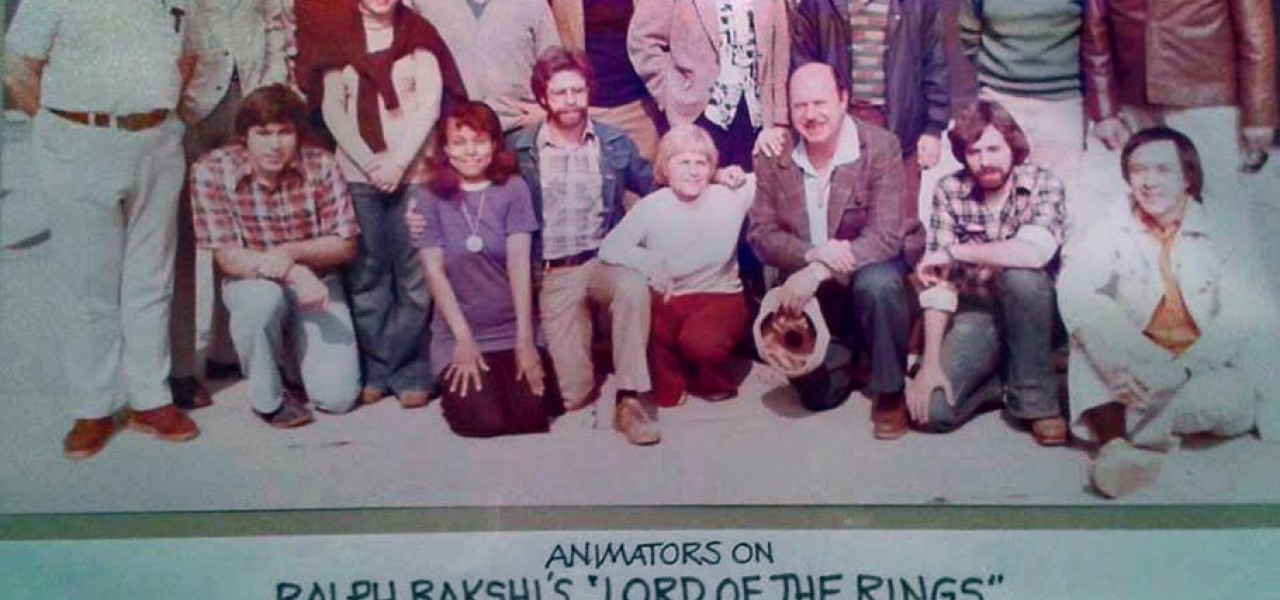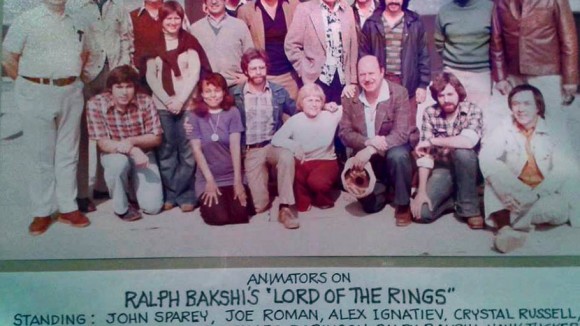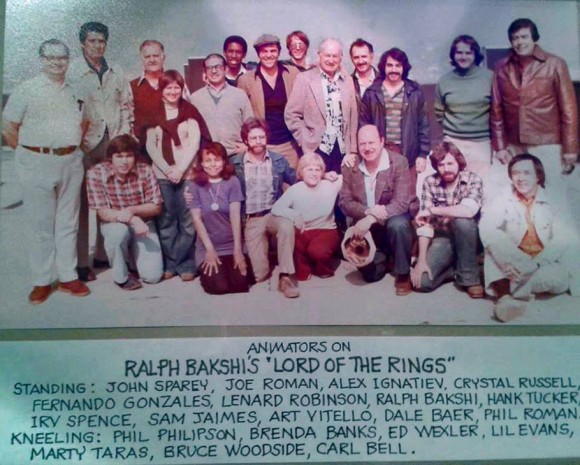

This ‘Lord of the Rings’ Crew Pic Reveals Something Important About 1970s Animation
This 1978 photo of the animation crew from Ralph Bakshi’s Lord of the Rings fascinates me and not just because one of my former animation teachers, Lenord Robinson, is in it. (If you want a difficult job, try teaching me animation!) No, the other reason I enjoy looking at it is because it represents the diversity of the animation industry during the 1970s.

The era is commonly viewed as the dregs of animation history, which is true in many respects, especially in regards to the mainstream American animation industry. But even during this uninspired lull in stateside animation, some amazing things were happening behind the scenes, and there was a grand payoff a decade later.
As this photo so beautifully documents, the Seventies were a unique moment in animation history when industry newcomers had the opportunity to work alongside not only experienced animators like Phil Roman and John Sparey, but Golden Age legends like Irv Spence, Alex Ignatiev, and Marty Taras. In the Lord of the Rings crew pic, Spence was 69 years old at the time of this photo, Ignatiev 65, Taras 64.
If you’re at a studio this afternoon, look around and count how many sixty- and seventy-something animators are working beside you. I’d wager not too many.
Back in the 1970s though, the greatest animators of the Golden Age could be found at every studio, whether it was the grand dame Disney or TV schlock-houses like Hanna-Barbera and Filmation. Films like Raggedy Ann and Andy: A Musical Adventure and Winds of Change had exceptionally age-diverse crews that would be unimaginable on any contemporary feature. (The oldest animator on Raggedy Ann was Grim Natwick, who was 86 years old when the film was released.)
Young artists who entered the industry couldn’t help but be in constant contact with earlier generations of artists. Perhaps some of those young artists, now veterans themselves, look back and wonder why they didn’t take greater advantage of the opportunity to learn from the modest masters in their midst, but they nonetheless picked up tips while sharing office space, and sometimes even got punched in the face by cranky legends.
It was not for naught. The subsequent resurgence that happened in both feature and TV animation was instigated mostly by the young artists who had been working alongside the Golden Age veterans. The major projects of the industry-wide rebirth, including Who Framed Roger Rabbit, The Little Mermaid, Mighty Mouse: The New Adventures, DuckTales, Tiny Toons and Ren & Stimpy, to name but a few, had principals who had been working in the industry since the late-1970s. In the Bakshi photo above, we see young artists like Hank Tucker, Art Vitello, Bruce Woodside, and Dale Baer who would each go on to make significant contributions as their careers progressed.
The effect of the cross-generational animation workplace hasn’t been fully (or even casually) explored by anyone—and it deserves to be. It alone did not lead to the industry’s creative revival; a confluence of forces was surely at work. But having known and spoken to many artists of that period, it’s clear that the age-diverse environments of the 1970s and early-’80s played some kind of role in the positive developments that followed.

.png)